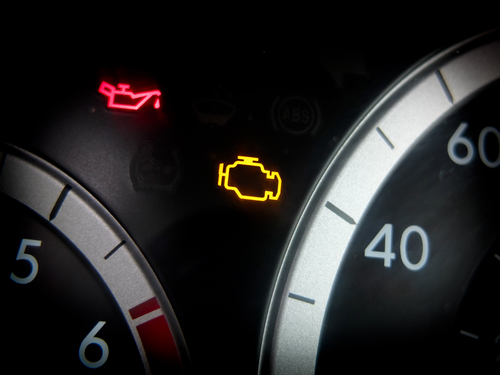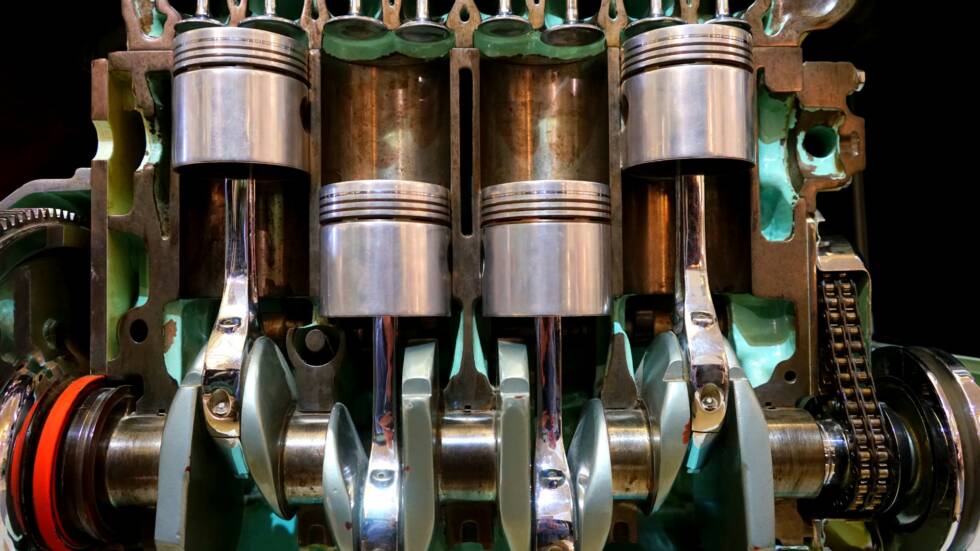Although it’s been heavily emphasized many drivers don’t make it a priority to conduct regular maintenance or necessary repairs to vehicles when required instead they often wait for something to go wrong before taking action. Typically this approach has proven to be far more expensive and inconvenient so carrying out preventative vehicle maintenance or prompt repairs is usually the best option to avoid possible issues with vehicles in the future.
Inside the instrument panel of most vehicle models the malfunction indicator light (MIL) or ‘engine light’ can be found. This indicator becomes active when there is an existing issue with a vehicle and this usually occurs when the computerized engine management system malfunctions. When any of these issues occur the engine light can appear in two different forms and these can be steady or flashing. Steady indicates a minor fault and flashing reveals a more severe issue.
Let’s say for example an oxygen sensor in a vehicle’s computerized engine management system is faulty. This can cause several problems such as increased emissions, reduced gas mileage and impaired ability to convert oxygen and fuel mixture to occur. These can all eventually lead to a malfunction of the vehicle if not addressed urgently however in a situation like this the engine light will appear to let you know something is not right.
Therefore it would be safe to say that the presence of the engine light serves to alert a driver of any existing issues within the computerized engine management system. In most models the MIL is usually displayed with the prompt “check engine” “service engine soon” or a pictogram of an engine.
Engine Light a Sign that Vehicle Maintenance or Repair is Due
Apart from a faulty oxygen sensor there are several other occurrences that can cause the engine light in a vehicle to appear. Some of these may include a failing catalytic converter or a poorly installed or clogged air filter. There are also cases where MIL light can be falsely triggered which can mainly be contributed to the application of high amounts of methanol/ethanol or other additives to the engine however this is rarely happens .
Remember Prompt Repair And Regular Maintenance
Taking care to conduct regular maintenance and prompt repairs to vehicles is key to maintaining a properly working vehicle and ensures safety when travelling on the road.
Be sure to schedule regular maintenance at least three times a year to ensure that everything is as it should be with vehicles however if you happen to see your engine light appear you automatically know that there is an issue that needs to be rectified and should be dealt with promptly to avoid any further complications with your vehicle.

See Your Engine Light On ? Bring In Your Vehicle To All Round Auto Repair
Here at All Round Auto Repair we offer the highest quality mechanical and repair services in Santa Rosa. With a high customer satisfaction rating and affordable pricing our company provides great service to all clients.
If you see your engine light appear give us a call at: 707-837-0646 to schedule a visit or you can check out our website: allaroundautorepair.com for more information.
Frequently Asked Questions
1. What does it mean when my check engine light comes on?
When the check engine light (also called the Malfunction Indicator Light, or MIL) illuminates, it signals an issue with your vehicle’s engine management system. It could be a minor issue (like a loose gas cap) or a more severe problem (like a failing catalytic converter or oxygen sensor).
2. What is the difference between a steady and flashing engine light?
A steady engine light indicates a less critical issue, while a flashing engine light means there’s a more serious problem that needs immediate attention. If the light is flashing, it’s best to stop driving and seek repairs right away.
3. Can I still drive my car if the check engine light is on?
If the check engine light is steady, you can still drive your car, but it’s a good idea to get it checked as soon as possible. However, if it’s flashing, it’s best to stop driving immediately as the issue could damage your engine further.
4. What are common reasons for the check engine light to come on?
Common causes include a faulty oxygen sensor, a failing catalytic converter, or a poorly installed or clogged air filter. In rare cases, the light may be triggered by high levels of methanol or ethanol additives in the engine.
5. How can I prevent the check engine light from coming on?
Regular vehicle maintenance is key to preventing check engine light issues. Scheduling routine services like oil changes, filter replacements, and checking your vehicle’s computerized systems helps keep your car running smoothly.

6. Can a loose gas cap cause the check engine light to come on?
Yes, a loose or damaged gas cap is a common cause of the check engine light coming on. The vehicle’s system may detect a leak in the fuel system, which could trigger the light. Tightening or replacing the gas cap usually fixes the issue.
7. Should I take my car in for a checkup if the engine light is on but there’s no other noticeable issue?
Even if your car seems to be running fine, it’s important to have it checked when the engine light comes on. Ignoring it could lead to more costly repairs down the line if a small issue turns into a major one.
8. What should I do if my check engine light comes on right after filling up with gas?
If the light comes on right after refueling, the gas cap may not be tight or could be faulty. Check the cap to ensure it’s properly sealed. If the light doesn’t turn off after this, you should have the vehicle checked by a mechanic.
9. Is it normal for the check engine light to turn off by itself?
Yes, sometimes the check engine light can turn off if the issue resolves itself, such as when a loose gas cap is tightened. However, it’s still a good idea to have your car checked to ensure there’s no lingering issue.
10. Why is regular vehicle maintenance important for avoiding engine light issues?
Regular vehicle maintenance, like oil changes, filter replacements, and system checks, helps catch potential issues early. This prevents major malfunctions, saving you time and money, and helps avoid the check engine light from turning on unexpectedly.


